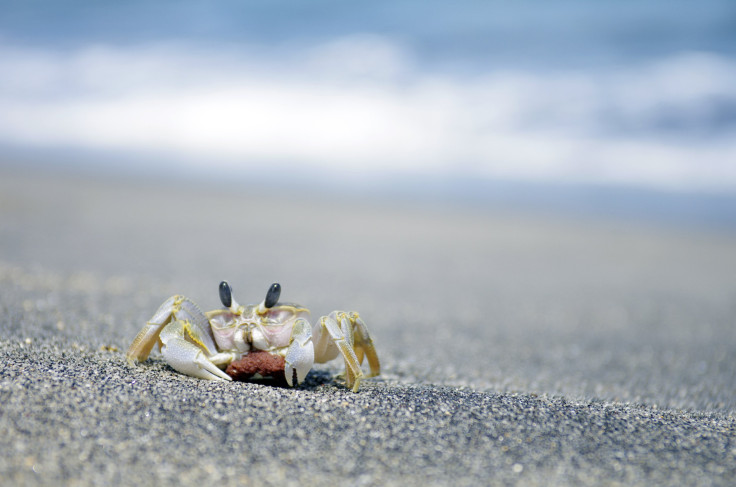
There are giant crabs on the way and according to researchers at the University of North Carolina's (UNC) Aquarium Research Center, they're going to wipe out the oyster population! In their recent study, researchers have found that high atmospheric levels of carbon dioxide -- a greenhouse gas that has been linked to global warming -- are doing more than destroying the environment: They're causing crabs to grow bigger.
According to the Washington Post, the ocean absorbs large amounts of atmospheric carbon dioxide and as the gas dissolves, the ocean water becomes more carbon-rich and acidic. The hike in carbon levels are causing crabs to become supersized, as carbon speeds up the molting process in crabs and crabs absorb carbon efficiently. This, in turn, makes them less vulnerable to their natural predators and increases their appetites, resulting in crabs feasting on oysters.
"Higher levels of carbon in the ocean are causing oysters to grow slower, and their predators -- such as blue crabs -- to grow faster," says Justin Baker Ries, a marine geologist at the University of North Carolina's Aquarium Research Center, in an interview with the Washington Post.
Unfortunately, there's more bad news for seafood lovers. Not only will the oyster population see a decline, but also these new supersized crabs have less meat in them since carbon-loaded crabs place an emphasis on shell formation instead of meat. The problem extends beyond availability of seafood since with crab sizes increasing, and oysters populations declining, the entire eco-system of the ocean is at threat with this change in the food chain.
"It's going to change the dominant organism in the food chain, and there's a very real danger that it may short-circuit the food chains," said Donald Potts, a professor of ecology and evolutionary biology at the University of California, Santa Cruz to Science Daily. "All biochemical physiological reactions are potentially going to change."
The supersized crabs study -- published in the journal Geology -- found that Chesapeake blue crabs grew close four times faster in high-carbon tanks as opposed to low-carbon tanks. In a similar high carbon environment, the researchers found that oysters, scallops, and other organisms failed to grow at accelerated rates. In fact, oysters grew at one-quarter of the speed as those did in low-carbon tanks, making them even more vulnerable to the supersized crabs.
Another recent study found that the shells of marine snails (also known as pteropods) are being dissolved courtesy of ocean acidification. The study, published in the journal Nature Geoscience, warns that the tiny animals are important in the ocean's carbon cycle, as they are a crucial source of food for fish and birds.
© 2025 Latin Times. All rights reserved. Do not reproduce without permission.





